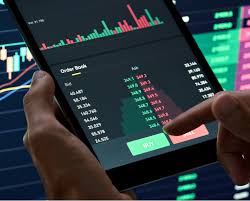
Comprehensive Guide to Crypto Trading Asset List
As the world of finance evolves, cryptocurrencies continue to gain traction among traders and investors. A well-informed decision relies on a comprehensive understanding of the various assets available. In this article, we present an extensive Crypto Trading Asset List that includes some of the most popular cryptocurrencies in the market today. Additionally, we showcase the features of each asset, along with their trading potential. For more insights into leading cryptocurrency companies and resources, feel free to Crypto Trading Asset List visit website.
1. Bitcoin (BTC)
Launched in 2009, Bitcoin is the first cryptocurrency and remains the most widely recognized and valuable. Created by an anonymous person (or group) using the pseudonym Satoshi Nakamoto, Bitcoin introduced the concept of decentralized finance. Bitcoin operates on a blockchain, which is a public ledger that records all transactions.
Key Features:
- Decentralized and secure
- Limited supply of 21 million coins
- Widely accepted by merchants and platforms
Bitcoin is often considered the gold standard of cryptocurrency and is often traded against fiat currencies.
2. Ethereum (ETH)
Ethereum, created in 2015 by Vitalik Buterin and others, is more than just a cryptocurrency; it’s a decentralized platform that enables smart contracts and decentralized applications (dApps) to be built and operated without downtime, fraud, control, or interference from third parties.
Key Features:
- Smart contracts and dApps capability
- High transaction speed and low fees compared to Bitcoin
- Constantly evolving with updates (e.g., Ethereum 2.0 transition)
3. Binance Coin (BNB)
Initially launched as a utility token for the Binance cryptocurrency exchange, Binance Coin has expanded its use cases significantly. Users can use BNB to pay for trading fees, participate in token sales, and make purchases from various merchants.
Key Features:

- Used for reduced trading fees on Binance
- Increasingly accepted for payments by merchants
- Strong backing from the Binance exchange
4. Cardano (ADA)
Created by one of the co-founders of Ethereum, Charles Hoskinson, Cardano aims to offer a more balanced and sustainable ecosystem for cryptocurrencies. Cardano’s development is driven by research and evidence-based methods to ensure scalability, interoperability, and sustainability.
Key Features:
- Focus on security and sustainability
- Layered architecture for scalability
- Strong academic backing and peer-reviewed research
5. Solana (SOL)
Solana is known for its incredible transaction speed and lower fees. It employs a unique consensus mechanism called Proof of History (PoH), significantly enhancing its scalability. As a smart contract platform, Solana has gained attention for hosting a range of DeFi projects and NFT marketplaces.
Key Features:
- High throughput of over 65,000 transactions per second
- Low transaction costs (< $0.01)
- Growing ecosystem and developer community
6. Ripple (XRP)
Ripple is both a platform and a currency (XRP) that is designed to facilitate real-time international payments. Ripple’s primary focus is on providing a seamless cross-border payment experience for banks and financial institutions, making it different from traditional cryptocurrencies.
Key Features:
- Fast transaction times (3-5 seconds)
- Partnerships with major financial institutions
- Low transaction fees
7. Polkadot (DOT)
Launched in 2020, Polkadot aims to enable different blockchains to transfer messages and value in a trust-free fashion; seeking to make a web where users are in control. Polkadot offers a unique technology that allows multiple blockchains to interoperate.
Key Features:
- Cross-chain communication capability
- Scalability through parachains
- Community-driven network upgrades
8. Chainlink (LINK)
Chainlink is a decentralized oracle network that allows smart contracts to securely connect to external data sources, APIs, and payment systems. This capability makes it an essential part of the DeFi ecosystem as it brings real-world data onto the blockchain.
Key Features:
- Decentralized data feeds to ensure accuracy
- Smart contracts can interact with real-world signals
- Supports various blockchain integrations
9. Litecoin (LTC)
Dubbed the silver to Bitcoin’s gold, Litecoin was created in 2011 by Charlie Lee. It offers faster transaction confirmation times and improved storage efficiency, making it a popular alternative to Bitcoin.
Key Features:
- Faster transactions compared to Bitcoin
- Lower transaction fees
- Strong community and adoption
10. Uniswap (UNI)
Uniswap is a decentralized trading protocol on the Ethereum blockchain that allows users to swap various tokens without the need for a traditional order book. It utilizes liquidity pools, enabling users to provide liquidity and earn fees in return.
Key Features:
- No intermediaries required for trades
- Users can earn fees as liquidity providers
- Non-custodial platform
Conclusion
The landscape of cryptocurrency trading is vast and ever-changing. Staying informed about the characteristics, uses, and potential of various assets is vital for any trader. The Crypto Trading Asset List provided in this article gives you a robust foundation to start your journey into the crypto market. Understanding what each asset offers allows you to make educated decisions tailored to your trading strategies. Always remember to conduct thorough research and consider your risk tolerance when trading cryptocurrencies.